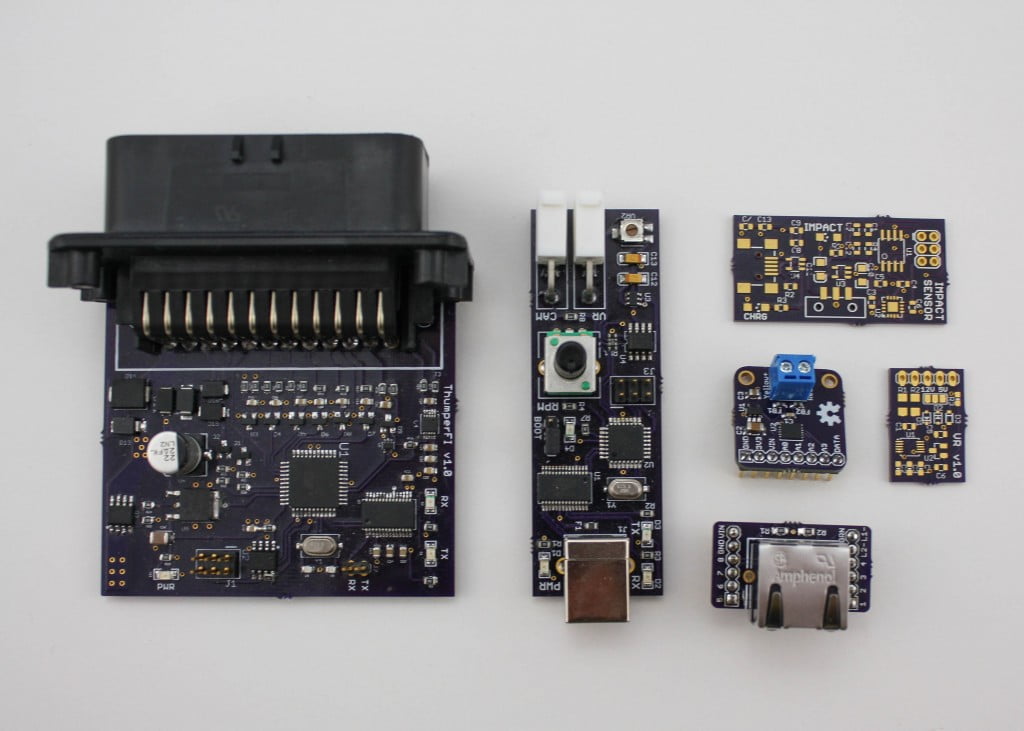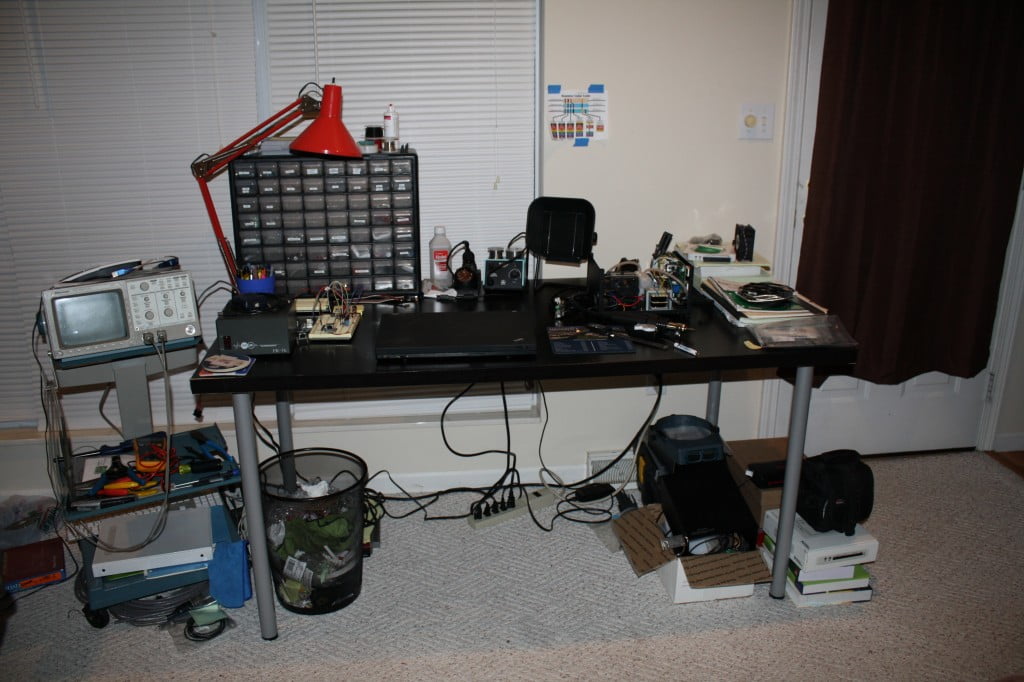Introduction
One theme you might have noticed throughout my project blog posts is that I like to design and assemble PCBs. I’m not saying that I’m a great PCB designer by any means, I still consider myself quite the novice with a lot to learn (especially about higher-speed PCB layout and noise considerations). However, my lack of experience hasn’t stopped me from trying; all said and done I’ve designed six PCBs to date which you can see below.
I started designing boards in the fall of 2013 with ThumperFI v1.0 (far left), a prototype single-cylinder engine controller. After successfully assembling and testing I was amazed what I had built worked – I had designed and assembled a circuit board! From here out I knew that if I needed a board (or just wanted a board) I could make it, or at least try to. My next board was VRSim (center next to ThumperFI), a VR signal simulator that I’m still developing software for. I’ve also found the ability to build boards useful for breakouts, like the RJ45 breakout I detail in another post or the MAX9924 breakout (far right, middle).
Why?
Why not, really. I’ve always been fascinated by circuit boards. As early as 7 or 8 I displayed a stereotypical engineer trait – I liked taking things apart (and not always getting them back together at first…). I remember taking apart my grandparent’s VCR that had broken and just staring at all of the intricate parts inside. I had no idea how it worked but I thought it was pretty cool. I had various run-ins with electronics through my teenage years; I had a BASIC Stamp at one point and even played around with AVRs on a breadboard before school took up most of my time. It wasn’t until sophomore year of college I decided to start pursuing my interest in them again. ThumperFI was that first attempt, a friend convinced me to try to build an EFI controller as a means of learning about fuel injection before working in the engine’s lab at school. Naturally, I decided that building something this complex had to be done from scratch (haha!) and dived in to brushing up on my embedded C and basic AVR breadboard layout. Two years later ThumperFI is still a project I’m working on and has more-or-less been the driving behind the knowledge I’ve gained in hobby electronics.
Where Does Mechanical Engineering Fit In?
I have a pretty strong interest in engines, like a good number of mechanical engineers, and in today’s automotive environment the engines are controlled by embedded controllers. As a mechanical engineer I feel that my understanding of how engines operate is enhanced by my understanding of the underlying electronics, the capabilities and limitations of the control system.
Bench Setup
Like any engineer I enjoy collecting and using tools and my electronics hobby has been no different. I started with a terrible RadioShack soldering iron, a breadboard and a handful of through-hole components and have worked my way up to a bench setup that includes:
- Weller WES51
- Tektronix TDS 320
- Fluke 115 Multimeter
- TrippLite PR-7b (still looking for a good, reasonably priced variable power supply)
- Hot-air Rework Station
- And much more!
Collecting this equipment has taken roughly two years and plenty of research, both online and through discussions with my electrical engineering friends.

